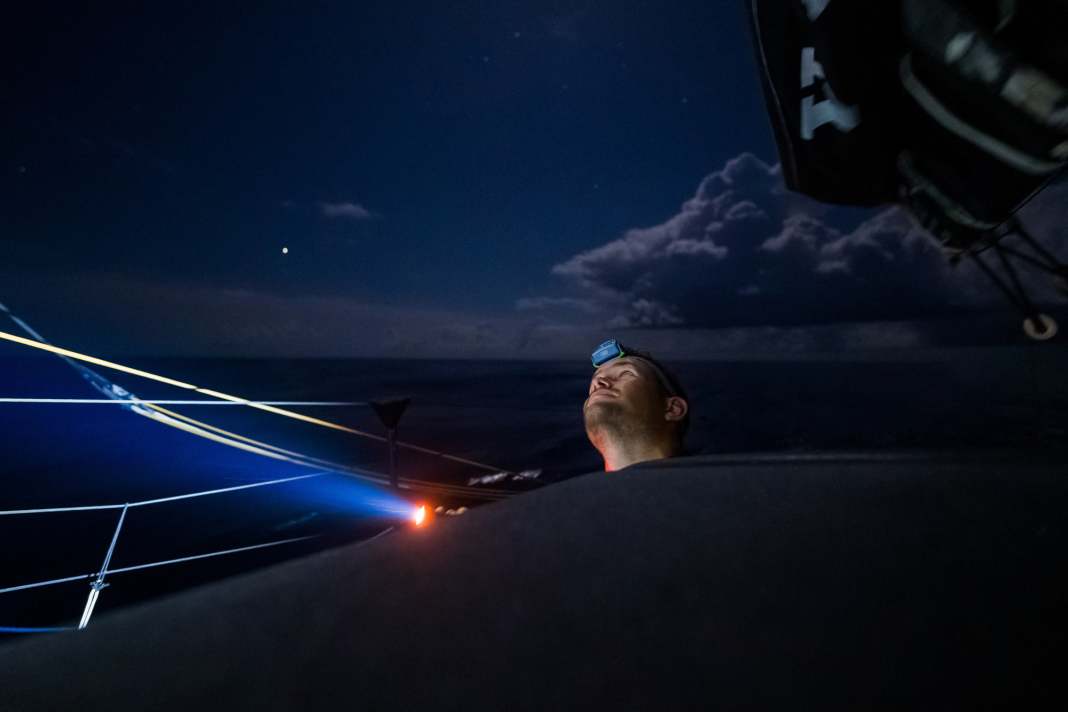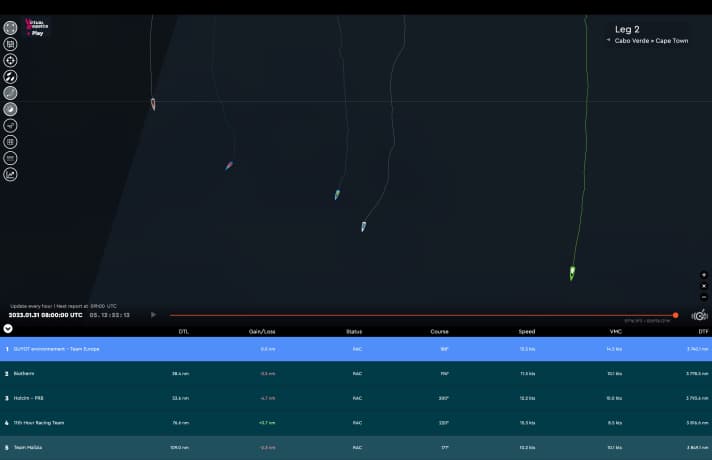





Over the past few days, the teams on stage two from Cape Verde to Cape Town have repeatedly invested in western positions to varying degrees. On their way south, the squalls seemed less pronounced further west at first. However, Guyot Environnement - Team Europe was the first to be rewarded as they dived into the southern hemisphere. The crew led by Berlin skipper Robert Stanjek deviated the least to the west, staying close to the direct course to Cape Town.

Phillip Kasüske: "It looks like we've got a good track"
With a speed of more than twelve knots and a 24-hour average of 8.5 knots, skipper Robert Stanjek, Sébastien Simon, Anne-Claire le Berre and Phillip Kasüske were able to extend their lead over Paul Meilhat's "Biotherm" to almost 35 nautical miles by the morning of 31 January. The Guyot quartet had laid the foundations for this on the night of 30 January, as Phillip Kasüske explains: "We had a very good night with winds of up to ten knots. It looks like we've got a good course, even if it didn't look like it at first. We are still moving in the Doldrums, but on a nice straight line to the south."
Off to the south ...
Team Malizia has been the most westerly boat in the last few hours, reaching speeds of around 16 knots at times. However, the boat flying the German flag is not currently making any progress on its journey westwards. By the sixth day at sea, the "Malizia - Seaexplorer" had closed the gap to around 110 nautical miles. On Tuesday morning, the crews on "Biotherm", "Holcim - PRB" and "Mālama" from 11th Hour Racing were fighting for every mile that would take them south in the "sandwich" of the leaders on "Guyot" and the tail-enders on "Malizia - Seaexplorer".
